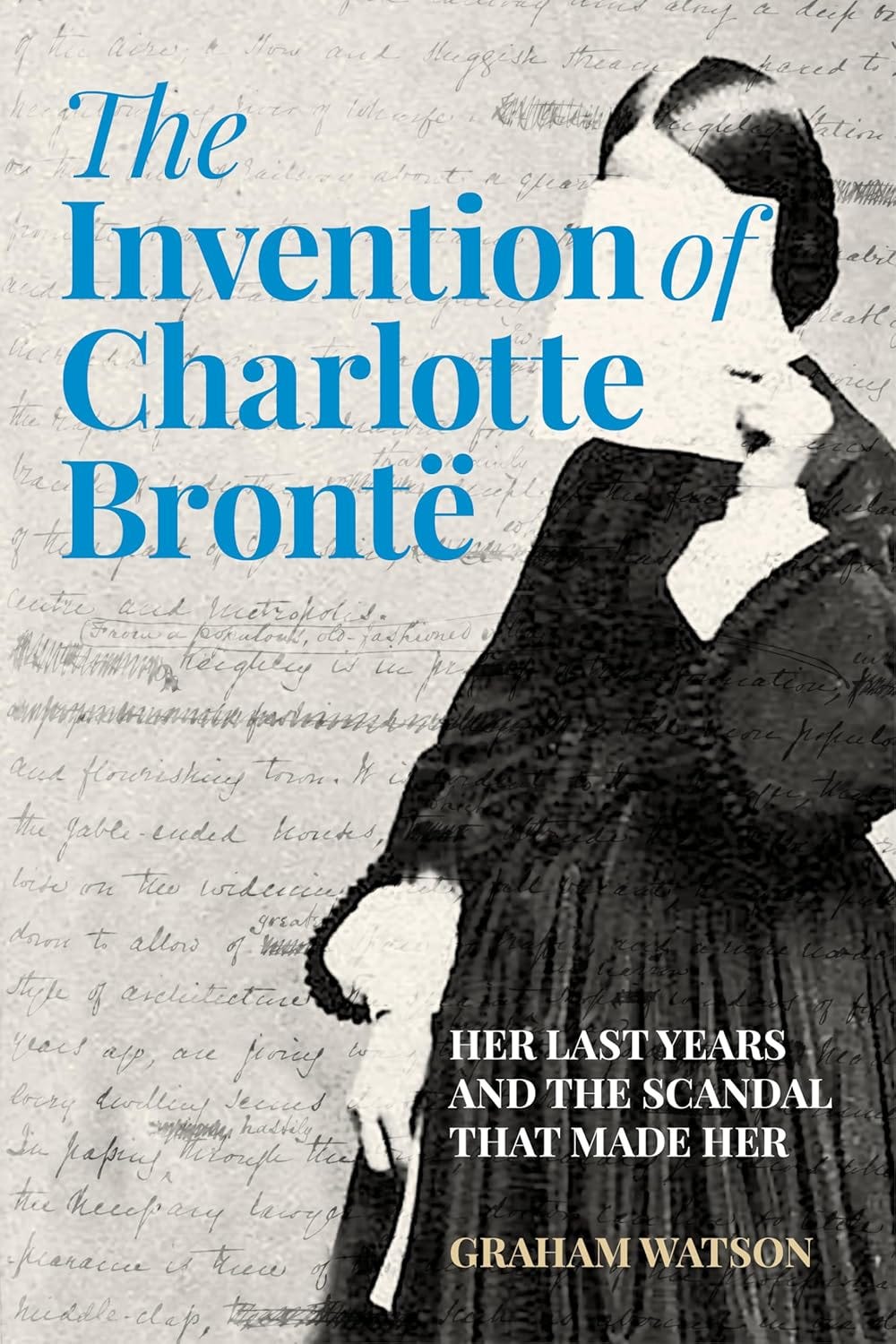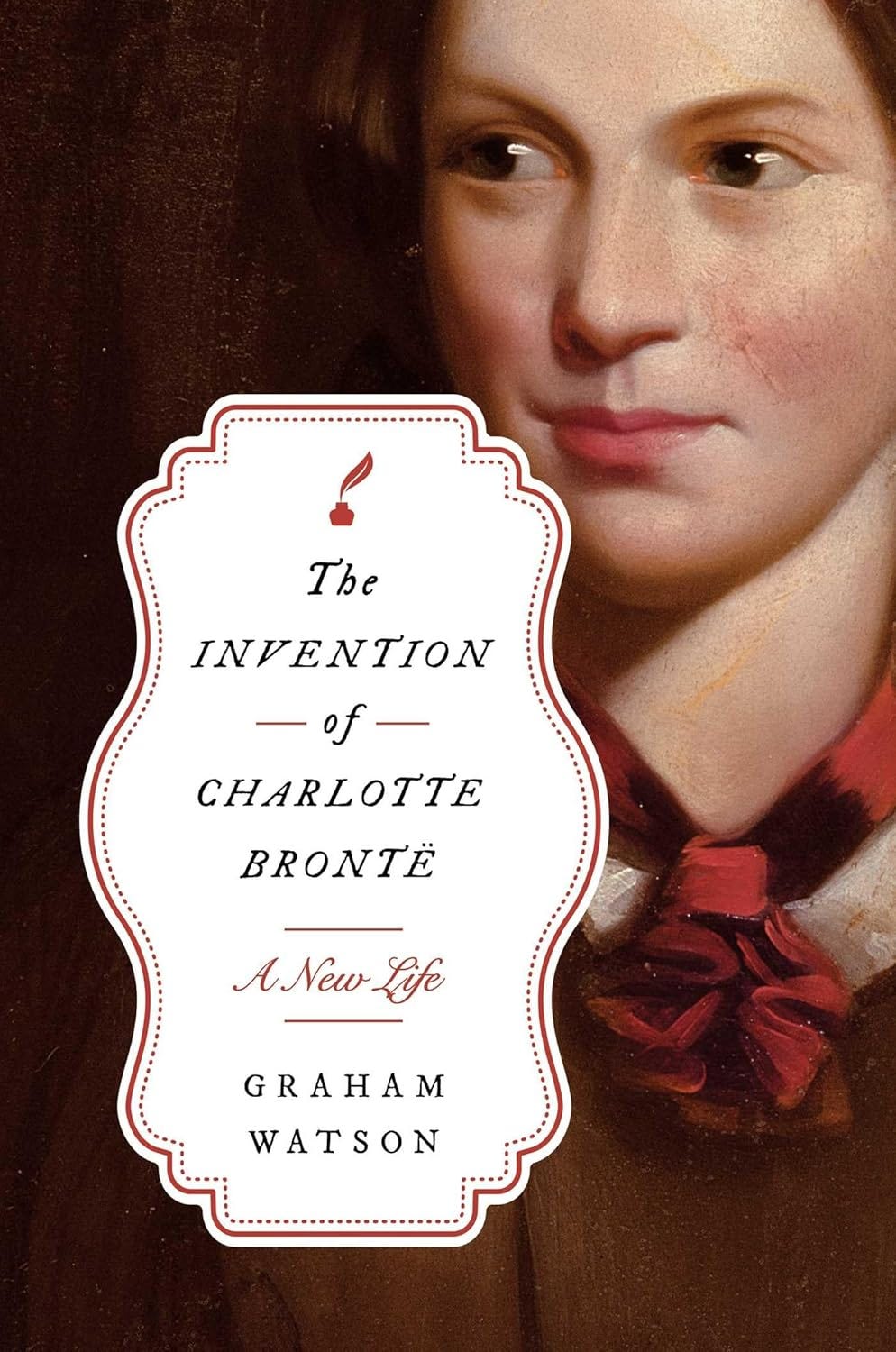'Invention' and Truth: Graham Watson Reexamines the Charlotte Brontë Legend
In his ambitious debut, The Invention of Charlotte Brontë, Graham Watson delves into one of literature's most enduring mysteries: how did Charlotte Brontë transform from an obscure parson's daughter into a literary legend? Through meticulous research and fresh analysis, Watson challenges long-held assumptions about Brontë's life and legacy, focusing on the controversial biography written by Elizabeth Gaskell just two years after Charlotte's death.
Watson, who studied English Literature and Language at the University of Glasgow, brings scholarly rigor and narrative flair to this complex story. His investigation reveals how Charlotte Brontë actively shaped her public image, even as others – from her protective father to her first biographer – worked to control her life's narrative. The book pays particular attention to Brontë's final five years, a period often dismissed as a quiet epilogue but which Watson argues was crucial to understanding her journey and her lasting influence on literature.
In our conversation, Watson discusses what drew him to Charlotte Brontë's story, explains his surprising discoveries about Elizabeth Gaskell's biographical methods, and explores how the tension between private truth and public perception continues to shape our understanding of one of literature's most fascinating figures.
Jonathan Crain: What initially drew you to Charlotte Brontë's story, and at what point did you realize there was a new narrative here that needed to be told?
Graham Watson: I’m fascinated by behind the scenes or off-camera events and how cultural events are constructed for the public. The refinement process that produces biography and history is comparable, and having been obsessed with the Brontës from an early age I wanted to explore how they moved from private obscurity to public legend within a few years. Elizabeth Gaskell was commissioned to write a biography of Charlotte just weeks after her death and it was hugely controversial when it was published two years later. It’s divisive even now. I wanted to know the details of how that happened.
Jonathan Crain: The title of your book, "The Invention of Charlotte Brontë," suggests a deliberate crafting of her public image. How did this process of "invention" begin during her lifetime and evolve after her death?
Graham Watson: By the time Charlotte Brontë met her future biographer, Elizabeth Gaskell, she was telling stories about her own life to everyone she met. It’s tempting to read this as self-mythologizing but I see it as part of her survival and adaptation process. I propose this, and not spurious gossip and conjecture as has been assumed, was the foundation of Gaskell’s controversial biography.
Jonathan Crain: In researching such a well-documented subject, how did you approach the challenge of separating first-hand historical evidence from accumulated biographical interpretations?
Graham Watson: This was the key challenge. So much of what is assumed to be biographical fact about the Brontës has no origin in the historical record. Going back to original sources, getting under the whitewashing, always challenges received wisdom, and I had to write as though none of the other secondary-source biographies had been written.
Jonathan Crain: You write about the complex dynamic between Gaskell and Charlotte from their first meeting. How would you characterize their friendship, particularly given their different social circumstances and lifestyles?
Graham Watson: They liked each other enormously, respected each other professionally and were mutually supportive. Despite comparable backgrounds – both lost their mothers early to be raised by an aunt, both were in clerical households, both born writers – their natures were so different they could have easily clashed. Brontë’s chronic social anxiety prevented her from enjoying the social whirl Gaskell loved. Instead they found common ground where their differences met. The more Gaskell learned about Charlotte’s tragic life the more she felt she needed a champion. On a personal level, Gaskell helped Charlotte feel comfortable in social situations that would have threatened her before.
Jonathan Crain: How did Charlotte's role in preserving her sisters' literary legacy - through new editions and biographical notes - affect her relationship with fame and public perception?
Graham Watson: This has been seen as Charlotte’s constructing her own myth and trying to overshadow her sisters. Beliefs that Charlotte jealousy destroyed a second novel by Emily and prevented the republication of Anne’s Tenant of Wildfell Hall are widespread. But they’re complete fiction. A second novel by Emily is a conjecture based entirely on a single letter intended for Anne, and Charlotte authorized a new edition of Tenantto come out in 1854. We have her written confirmation of that. These myths have created a bad faith bias against Charlotte, unjustly. In reality, it was she who drove the reissue of her sisters’ novels because they were drifting out of print.
Jonathan Crain: What makes the last five years of Charlotte's life particularly crucial to understanding both her personal story and the subsequent battle over her legacy?
Graham Watson: At age 33 Charlotte was the last survivor of her 5 siblings, none living past 30. Conventionally her last 5 years are seen as a quiet epilogue to their lives, but I tell it differently. Evidence shows she tried to reinvent her life and face the future with hope. Her novels had made her famous and she was navigating new worlds personally and professionally. So, it became a time of reflection and planning, the era when everything that formed the Brontë legacy was preserved and presented to the public, either through prefaces Charlotte wrote about her sisters or Gaskell’s biography.
Jonathan Crain: Could you talk about Charlotte's relationship with her pseudonym 'Currer Bell' and what her eventual decision to abandon it reveals about her character?
Graham Watson: It was more complex than how it’s been presented because Charlotte evolved it from just a pen name to a persona with a distinct style, writing letters in his assumed voice to her publisher and readers and even signing things as Currer Bell. We’ve imagined she hid behind it from hostile male critics, but publishing under a pseudonym was normal then. William Thackeray wrote under 9 different names, until he started using his own. He was the type of imperious man of letters Charlotte imagined Currer Bell to be – until they met and she disliked him. Eight months after Jane Eyre was published she revealed her true identity to her publisher, and three years later she was exposed in the press. Although she accepted her real name was common knowledge she decided to publish her final novel, Villette, under Currer Bell. However, it’s telling that when her publisher released Gaskell’s biography of Charlotte four years later they did not call it The Life of Currer Bell.
Jonathan Crain: What aspects of Gaskell's original biography proved so controversial that they led to legal threats?
Graham Watson: Complaints began immediately, in the first fortnight of its release. Every newspaper was covering it, so it had huge international exposure. Within days some of those named in it threatened to sue. A society woman who’d had an affair with Charlotte’s brother was outraged, as was Charlotte’s former headmaster, responsible for the hellish school immortalized in Jane Eyre. Soon many others, including Charlotte’s father, were unhappy and asked Gaskell to make changes to the text. A public apology was issued and the changes made by a legal team to make sure they stayed lawful, but privately Gaskell still insisted every word was true.
Jonathan Crain: Your research uncovered the remarkable extent of Gaskell's biographical investigation. What did her methodology as a biographer reveal about her commitment to the truth?
Graham Watson: It’s always been assumed Gaskell relied on conjecture and used her novelistic impulses to turn Charlotte’s life into a gothic melodrama. This couldn’t be further from the truth. Even though she had never written a biography before she was incredibly diligent. She sourced letters from all Charlotte’s correspondents, traced everyone who’d known her, from close friends to childhood schoolteachers, interrogated her sources and ruled out many she felt were unreliable, even travelled to Belgium just to interview someone in person. Gaskell told her publisher repeatedly she wanted to tell the terrible truth about Charlotte’s tragic life, even if it meant offending those who’d treated Charlotte badly. That would come to haunt her.
Jonathan Crain: Who were the primary parties opposing Gaskell's version of Charlotte's life, and what were they trying to protect?
Graham Watson: Branwell Brontë’s mistress, Charlotte’s headmaster, and Charlotte’s father all wanted to protect their public reputations and have Gaskell remove pejorative sections of the book that related to them. While it’s tempting to characterize them as censors, they had a legitimate point that they’d been included in the biography, and in the resultant newspaper coverage, without their consent.
Jonathan Crain: How do you interpret Gaskell's decision to publicly recant while privately maintaining the truth of her claims?
Graham Watson: She was given an impossible choice: to go to court and lose or avoid being taken to court. She knew she wouldn’t win a legal case against those with money and power to defend themselves, and as her key witnesses were mainly from a lower-class socio-economic bracket, she felt the experience would ruin more people than it vindicated. She fell on her sword. To avoid court she falsely stated she was in error and deleted the offending sections from the subsequent editions of Life of Charlotte Brontë. Her admissions of error were accepted and have remained unchallenged till now. It’s time to look again at them and call out the clear injustices in silencing Gaskell.
Jonathan Crain: How has the academic community responded to your new interpretation of these events?
Graham Watson: Very favorably! Academics have been generous enough to commend my research and praise the book, many saying much of my information is new to them, which is wonderful. I’ve been blown away by the sometimes very emotional responses readers have sent me from all over the world. Interestingly, my exposure of Charlotte’s father’s often unforgiveable behavior has irked one or two critics. Their complaint should be with the historical record, not me. They reveal themselves when they defend him with ‘facts’ that were debunked over a century ago as late Victorian inventions. The myth still has influence.
Jonathan Crain: What do you hope readers will take away from this new perspective on Charlotte Brontë's final years?
Graham Watson: One reader told me she thought my book humanized the Brontës. I hope that by bringing an insight into their realities, to the extraordinary challenges they overcame – dead-end jobs, impossible relationships, personal insecurities and grief – to remain artists shows how their achievements were even more incredible than we’ve always thought.
Graham Watson's The Invention of Charlotte Brontë offers more than just another biographical account of the celebrated author. By meticulously reexamining the creation of the Brontë legend through the lens of Elizabeth Gaskell's controversial biography, Watson illuminates the complex processes by which private lives become public narratives. His research challenges the conventional image of Charlotte Brontë as merely a tragic figure, revealing instead a resilient artist who actively shaped her own story while navigating the constraints of Victorian society.
Perhaps most significantly, Watson's work demonstrates how the controversies surrounding Gaskell's biography - from its legal challenges to its lasting influence - reflect issues that remain startlingly relevant today. In an era where personal narratives are increasingly commodified and debated, Watson's questions about privacy, truth-telling, and the ethics of biography resonate with a particular force. His careful untangling of fact from fiction and his exploration of how Brontë's image was "invented" both during and after her lifetime offers valuable insights for literary scholars and anyone interested in how public reputations are constructed and maintained.
As Watson compellingly argues, understanding the "invention" of Charlotte Brontë helps us better appreciate her remarkable achievements and the power of biographical storytelling to shape cultural memory. In this way, his book significantly contributes to both Brontë studies and our broader understanding of how literary legends are made.
You can purchase The Invention of Charlotte Brontë in the UK (The History Press, June 6, 2024) from Blackwells, Waterstones, and Amazon in the USA (Pegasus Books, August 5, 2025) from Amazon or Barnes & Noble.



